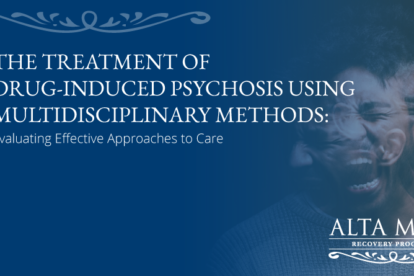
Borderline Personality Disorder and Addiction
Addiction and borderline personality disorder (BPD) often co-occur. BPD is a difficult mental illness that causes mood swings, intense emotions, unstable relationships, and a lot of dysfunction. The challenge of coping with these symptoms can cause someone to resort to drugs or alcohol. While this may provide some temporary relief, substance use will only worsen the condition and eventually lead to an addiction. Getting diagnosed and treated for both issues at the same time is essential, and with dedicated care the prognosis is positive.
What Is Borderline Personality Disorder and Addiction?
Personality disorders are mental illnesses that cause unhealthy behavioral and thought patterns that make it difficult for a person to function and have healthy relationships with others. Borderline personality disorder, or BPD, is characterized by mood instability, difficulty with self-image, unstable relationships, fear of abandonment, and impulsive behaviors. This personality disorder makes having normal relationships very challenging. BPD is treatable, but it is difficult to manage because the person suffering from it has a hard time seeing his or her thoughts and behaviors as abnormal or problematic.
It is not unusual for someone with BPD, especially when untreated, to turn to drugs or alcohol to try to find relief. It is an unproductive and unhealthy coping mechanism because it does not treat or manage the condition, and any relief is temporary. In the long run, using substances can worsen mental health symptoms and can lead to a substance use disorder or addiction. When someone struggles with BPD and an addiction they have multiple symptoms that are intertwined and affected by each other. Treating someone in this situation means addressing both issues at the same time.
Facts and Statistics About Borderline and Addiction
- Current estimates for the prevalence of BPD in the adult U.S. population are around 1.6 percent. The actual number may be higher.
- Women are diagnosed with BPD more often than men, but this may be due to misdiagnoses.
- Signs of BPD can be seen in children, but it is rarely diagnosed in young people.
- The rate of suicide is 50 times higher in people with BPD than in the general population.
- One study that used a large survey of individuals found that more than 50 percent of people who had been diagnosed with BPD had also been diagnosed with a substance use disorder in the last year.
- The same study found that nearly 10 percent of people with substance use disorders were also diagnosed with BPD.
- People with substance use disorders along with a personality disorder have worse substance abuse symptoms and are more likely to engage in risky, drug- or alcohol-related behaviors.
Symptoms and Diagnosis of Borderline Personality Disorder
BPD is diagnosed by looking at nine symptoms. At least five of these must be present in an individual and persist for an extended period of time, interfering with normal functioning, for a diagnosis to be made:
- An intense and irrational fear of being abandoned
- Unstable, intense relationships
- A confused or changing sense of self or difficulty determining an internal self-image
- Impulsive, potentially destructive and harmful behaviors
- Self-harm, which may include suicidal behaviors
- Extreme mood swings and irrational emotional responses
- Feelings of emptiness and nothingness, a sense of detachment
- Irrational and intense fits of anger, directed inward or at others
- Feelings of paranoia and suspicion of others
Diagnosing substance use disorders in people who have BPD is important because they so commonly co-occur and because addressing only one issue will not lead to the best outcomes. Making these two diagnoses can be challenging because the behaviors they each trigger can be confused for one or the other. Diagnostic criteria for a substance use disorder include:
- Using a substance more or for longer than intended
- Spending an inordinate amount of time getting or using a substance
- Trying to cut back but being unsuccessful
- Not completing responsibilities because of substance use
- Cravings for a substance
- Using substances in spite of problems it causes in relationships
- Missing normal activities or socializing because of substance use
- Continuing to use substances, even in physically dangerous situations
- Developing health problems because of substance use
- Developing tolerance to a substance and withdrawal symptoms
High-Functioning Addiction and Borderline Personality Disorder
To be high-functioning means to have some kind of health issue but continuing to function mostly normally in spite of it. With addiction this often means that a person is hiding their substance use well, continuing to keep up appearances and getting most of their responsibilities completed. Borderline personality disorder is rarely high-functioning as the symptoms are very hard to manage.
However, an individual could have BPD and a form of substance use that is high-functioning. It is very important to screen BPD patients for substance use for this reason. When an addiction is left untreated it will only get worse, and it will continue to contribute to the symptoms of BPD, making recovery more challenging and recurrences more likely.
Causes and Risk Factors
Causes of both addiction and personality disorders are largely unknown. There is some evidence that there are abnormalities in the brain that could cause BPD, but it is more likely that there are several risk factors to that come into play and cause the disorder to develop. These include genetics and family history, traumatic experiences during childhood, and certain personality traits including aggression and impulsiveness.
Risk factors for addiction and substance abuse are similar and include difficult life situations, chronic stress, traumatic experiences, a family history of substance abuse and addiction, and having mental illnesses. Having BPD is definitely a risk factor for substance use disorders, but so are other mental illnesses like depression or bipolar disorder. Substance use is not necessarily a risk factor for BPD, but it may trigger or worsen symptoms in someone who is predisposed to BPD or has it but has not been diagnosed.
Withdrawal and Detox
Anyone who is struggling with both addiction and borderline personality disorder needs to be treated for both issues at the same time. However, it is essential that a patient be sober before real treatment can begin, so going through detox is typically the first and most important step in any treatment plan. Substance use can cause withdrawal, so detox can be uncomfortable, or even dangerous in some situations. The detox process may cause:
- Mood swings
- Irritability
- Headaches
- Nausea, vomiting, and stomach upset
- Insomnia or sleepiness
- Disorientation
- Confusion
- Appetite loss
- Sweating
- Shaking
Symptoms of BPD can be exacerbated by withdrawal. Detox may be even more dangerous for patients with BPD than others, because they are already susceptible to self-harm and suicidal behaviors. For these reasons it is essential that detox be supervised.
We're Here to Help. Call Today!
866-922-1350Other Co-Occurring Disorders
Anyone with a personality disorder, including BPD, is also at risk for other co-occurring disorders in addition to substance use disorders. These include any other mental illness, but particularly psychotic symptoms and disorders. Psychosis refers to a break with reality and with BPD often includes paranoia, suspicions, and delusions. Other possible psychotic symptoms are detachment and dissociation. BPD also commonly co-occurs with major depression, bipolar disorder, anxiety disorders, and eating disorders.
Borderline Personality Disorder and Addiction Prognosis
Treatment for addiction and BPD must address both conditions as well as any other co-occurring disorders. Ignoring any mental or behavioral health issue will greatly reduce the effectiveness of overall treatment. As with other mental illnesses and substance use disorders, BPD with addiction can be treated with a combination of therapy and, if appropriate for the patient, medications.
Research has found that there are two types of therapy that are particularly useful in treating BPD. The first is dialectical behavioral therapy, or DBT. DBT was developed specifically for patients with BPD. It involves teaching patients to be more aware of and to accept the abnormalities in their thinking and behaviors and to use practical tools to manage feelings, behaviors, moods, and relationships.
Also useful in treating BPD is family psychoeducation. This therapeutic strategy involves family members of patients and teaches them more about BPD and how to best support their loved one. This is an integrated type of therapy that uses education, behavioral therapy, group support, and training to help family members better relate to each other and support someone with BPD in managing symptoms. These therapies, along with addiction counseling, can help individuals manage both conditions.
There are no approved medications specifically for treating BPD, but antidepressants and mood stabilizers may help some patients. Medications may also be used to manage an addiction, especially if the substances used are opioids. Medicated treatment is not right for everyone but can help some patients manage symptoms alongside dedicated therapy.
BPD is very difficult to treat, but the prognosis is good for those patients who recognize that they need help and are committed to treatment over the long-term. Integrated drug addiction treatment and rehab can also be successful, when patients work on both substance use disorders and BPD at the same time.






